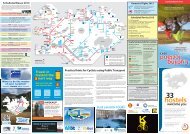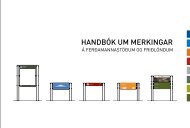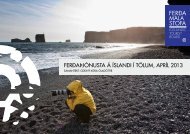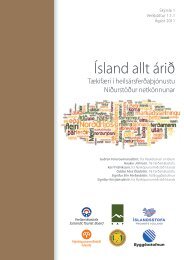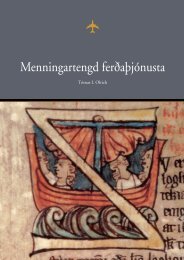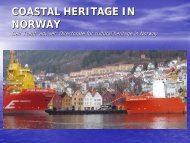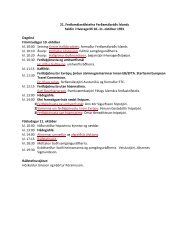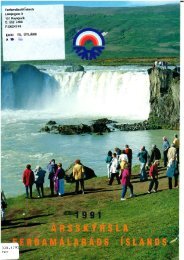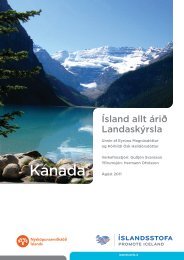Untitled
Untitled
Untitled
You also want an ePaper? Increase the reach of your titles
YUMPU automatically turns print PDFs into web optimized ePapers that Google loves.
gradually expanded and become more complex and varied. For example,<br />
and as we illustrated above:<br />
Emerging mobile technologies are changing the nature of vision for both<br />
tourists and tourism researchers (Feighey 2003, p. 82).<br />
If there now was an earlier tendency in tourism studies to approach<br />
images as predominantly visual, then this has been challenged by various<br />
other theoretical understandings and developments. A recent example is<br />
performative notions of tourists and tourism. In addition to paying<br />
attention to how tourism is done, through practises and active<br />
engagements, those with a performative approach emphasize the<br />
importance of other senses along with the visual for tourist experience and<br />
behaviour (Bærenholdt, Haldrup, Larsen, and Urry 2004, Crouch 2003,<br />
Edensor, 2001). If image-mediated tourist encounters and experiences in<br />
practice are embodied and involve all the senses, then there is clearly more<br />
to images in tourism than their pure visuality.<br />
This further suggests that images need to be placed, understood, and<br />
investigated in a broader context. For that purpose we have chosen the<br />
umbrella term “tourist and tourism imaginationings”. By this we want to<br />
refer to a terrain that covers all kinds of production and consumption of<br />
tourism, through the medium of images and imaginationings, by tourists as<br />
well as actors and stakeholders in the industry. It also embraces<br />
imaginationings of tourists and tourism produced by researchers and<br />
scholars in tourism studies, ourselves included.<br />
In this perspective, tourism can be said to live a life in-between<br />
meaning and matter, for example, in-between all kinds of concrete things<br />
which people attach with touristic meanings. What we refer to as “tourist<br />
and tourism imaginationings” is then about ways of bringing meaning and<br />
matter together for particular tourism and tourist purposes. In other words,<br />
imaginationings here involve processes of signification that translate the<br />
physical matters of travelling, locations, and whatever material resources<br />
that humans meet as bodies with senses, into various touristic meanings<br />
and values. This process of translating and transforming is necessary in<br />
order for goods, services and sights on the Earth to be appropriated for<br />
tourism purposes and become tourism commodities.<br />
Enlarging the context of images in tourism studies means that one<br />
needs to consider also other modalities that are part of the constitution of<br />
tourism and tourist imaginationings, for example “globalization”,<br />
“capitalism”, “neo-liberalism”, and environmental concerns and public<br />
6



